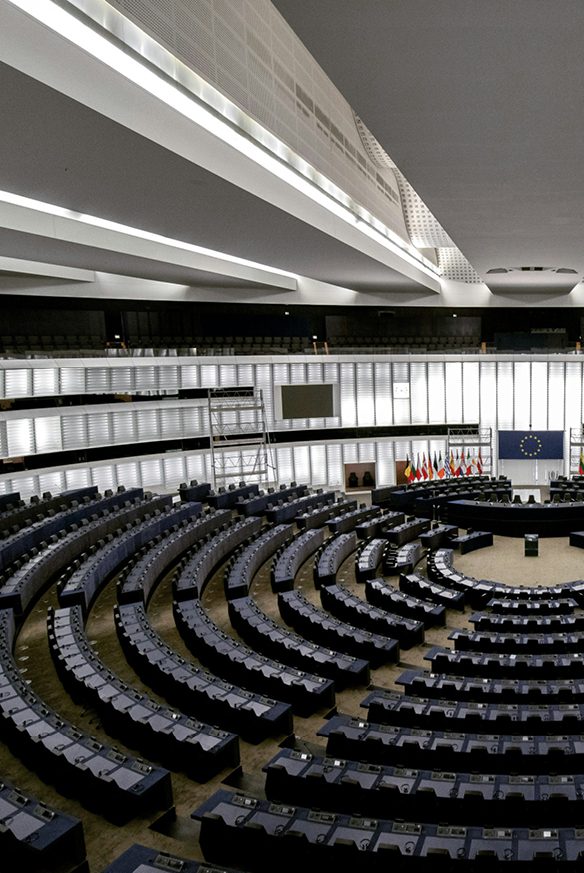

The Obexion MD XR security shutter is approved for UK government use by the National Protective Security Authority (NPSA). It is the most secure, third-party–accredited shutter system currently on the market.
Considerations for information, people, property, and assets must all be applied within the structural reinforcement of the building, without fortifying the property beyond recognition. Government officials and services are often based in buildings of national importance in their own right and therefore have regulations and requirements beyond that of the staff and contents within.
As with many nations, there is a certain amount of distrust against the government party in power. Those who are unhappy use every opportunity and platform to voice their concerns, and it is unfortunately common for their grievances to turn into threats and then turn into violent acts. The horrific violence against Member of Parliament Jo Cox in June 2016, resulting in her death, is a testament to the risk posed to Government buildings and their occupants.
Find out how Charter Global can protect your government building
The organisation titled National Protective Security Authority (NPSA) identifies Government, along with Energy, Transport and Defence, as one of the thirteen sectors most critical to the functioning of the UK concerning economic stature and society. Regarding physical security, NPSA requires a certain level of standard resistance performance for all products and solutions implemented in sectors crucial to keeping the country running.
As understood industry-wide, there must be considerations for all four elements of security best practice (procedures, technology and personnel being the remaining three) when securing any application.
Physical security for government buildings must encompass all risks, from a basic denial of unauthorised attempts of access, right the way through to minimising that collateral damage to infrastructure. As government facilities can be home for all UK international business treaties right the way through to land tenure, the potential threat level is widespread and complex.
Understanding the risk is vital for understanding how to protect a property, no matter the threat priority. For high-priority buildings, such as the Houses of Parliament, the extensive security protocols must work in conjunction with all measures in place across the wider security spectrum. It is highly unlikely that an opportunist criminal will target a building of such significance, therefore risk and tools profiles are sophisticated and dangerous.
Older properties will be more vulnerable to these sophisticated methods, but effectively premeditating an attack does mitigate the threat to a certain extent. For example, blast is relevant within the UK, therefore blast-resistance door, windows, and structurally reinforced frames are recommended for Government buildings.
Book a consultation to find out how we can assist you
Many of the risks discussed thus far are criminal. Government buildings are also at high risk of terror attack. Embassies worldwide face similar risks, though many dependent on circumstance and national influence. Essentially, a property that is owned by the national governing body – either that of the nation’s or an international base – is perceived as culturally influencing, and therefore whoever is in control of that building will be portrayed as an influence.
One element that is difficult to control are crowds. Electronic face recognition and other technological developments of auto-detection have much improved our ability to control access and mitigate public incidents, but buildings such as government offices experience high volumes of footfall with close access to public transport. Logistics is an interesting element of security as there are extensive operational requirements as standard, not to mention the risk of terror attack.
Premeditated attacks will analyse security patterns so as to identify vulnerabilities, so a good tool is to internally identify these vulnerabilities and integrate preventative measures. Police watch lists, terror task forces and government security personnel are in constant communication so to mitigate risk when conducting special events, hosting high-profile guests or even moving security-level documents from one location to another.
Logistical movements are often highlighted as vulnerable, with entrances and other access points the most at risk of an opportune incident. Measures to mitigate this must be fast-acting, and effective in their deployment. RapiDeploy is a security shutter technology unique to Charter Global and its premium associations. A customer built upgrade feature, RapiDeploy has dual speed closing two-times faster than the industry standard, and is suitable for areas of public accessibility that may encounter lockdown situations.
The building interior also requires attention. If such an incident like the awful London Bridge vehicle-ramming attack in 2017 had escalated any further, the House of Parliaments may have been catastrophically damaged. If such an incident were to occur again, the interior structure must be strong enough so to protect the people against blast and vehicle ramming.
Charter Global offer a number of other solutions for CPNI projects. Please get in touch with our experienced team for further clarification.